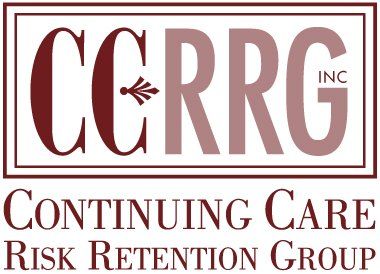Raising the Minimum Wage in LTC and How to Hire Well
Is California the Canary in the Coal Mine?

One of the biggest challenges long term care (LTC) facilities face is staying well-staffed, especially with NAs/CNAs, as they are a LTC facility’s frontline and its main day-to-day care providers. At best, such caregivers provide an excellent customer service experience for your residents and improve patient outcomes, and at worst, they may create liability exposure and potentially harm residents. They are also the key to a skilled nursing facility (SNF) meeting all of their State and Federal mandates. In short, their importance cannot be underestimated.
As you may be aware, the State of CA recently passed a minimum wage increase to $20.00 an hour for fast food workers, effective April 1st of 2024 via ASSEMBLY BILL 1228j. As a result, there have already been predictable ramifications for the fast food industry and its workers, and we may see such impacts in our own industry, if a similar minimum wage hike is put into effect.
The increase in the minimum wage for fast food workers has resulted in large-scale job losses, significant price increases, and even some companies turning towards robotics to replace employees. But, unlike fast food restaurants, long term care does not have the luxury of laying off staff, increasing prices (rates are predicated on MediCal and Medicare for approximately 70% of the residents), or the use of robotics, and must train all direct care staff to meet certifications requirements, a significant investment of time and money in addition to maintaining the required number of NAs/CNAs per shift, along with other professional staff i.e., RNs and LVNs.
While we can see the effects of the fast food salary increases, long term care is addressed separately by Senate Bill 525, signed by the Governor in October 2023. The Bill increases the minimum wage for health care workers to $25 per hour in the coming years. However, for skilled nursing facilities workers, they will only receive the wage increases if a separate trigger, requested by the Governor, enacting an SNF patient care minimum spending requirement, is enacted.
As a former LTC Skilled Administrator, and current President of Magnolia, and a program administrator for Continuing Care RRG, I remain concerned that the staffing increase, triggered by enhanced staffing ratios, which should be funded by the state of CA, may not occur, based on the difficulty that has already been incurred by the minimum wage increase in CA, coupled with a budget shortfall estimated to be between $31.5B to as much as $68B. I find it interesting that the Governor enacts a trigger for minimum wage, for the LTC workers, only if CA enacts specific LTC staffing increases. This is almost certainly due to a direct correlation of required increases resulting in increased MediCal cost to the State and MediCal recipients. California law requires the Medi-Cal program to increase the SNF reimbursement rate to reflect the Medi-Cal share of costs for new state or federal mandates, including increases in the minimum wage. The vast majority of SNFs are not subject to the health care minimum wage law unless a patient care minimum spending requirement is enacted in law.
In addition, the emphasis on automatic minimum wage increases for fast food workers to $20.00 an hour automatic (as of 04/01/2024) being given priority over that of LTC direct care staff, is hard to fathom. Per a March of 2024 study, the average hourly pay for a health care worker in CA is $16.87 an hour, well below the new fast food worker minimum wage of $20.00.
So, how can LTC facilities ensure that they hire well and reduce the challenges of staff turnover, especially in light of significant upward pressure for wages and limited ability to increase prices to compensate?
Hire the Right Person
Not everyone is meant to be a caregiver. Thus, it is absolutely critical that the interview process allows you to screen for, and find, not only someone who can do the job, but someone who wants to do the job.
Transparency
It is important to be totally transparent about the role and what it entails. Be very clear about the job duties and responsibilities with every candidate. While it may be tempting to not focus on difficult job duties like toileting and/or bathing of patients, it is imperative that these duties are mentioned and discussed candidly. Understandably, not every candidate will feel comfortable performing these tasks. Therefore, you don’t want to hire someone and then find out on Day 1, that they, in fact, don’t feel comfortable doing these tasks. Being transparent and straightforward shows respect to your candidate and ensures there are no surprises after hiring.
Screen for Bedside Manner
The interview process quite often focuses on the “skills,” i.e. nursing skill or past history, and does not always focus on candidates with good bedside manner. While skills and duties can be trained, it is much harder to try and train someone to have a good bedside manner. Even if a candidate is comfortable performing the above-mentioned tasks required for the role, it doesn’t necessarily mean that they should be performing such tasks.
Much of the care provided to residents is intimate and requires a sense of professionalism and sensitivity. Thus, it is important to try and gauge a candidate’s personality to see if they have these soft skills and if they will be able to build trusting, positive relationships with their residents and the residents' family members. Thus, asking if they have provided any sort of caregiving before –ideally in a professional setting –is imperative.
● Have they previously cared for children, the elderly, or another vulnerable population?
● Have they previously held positions where they have had to build relationships?
● Would you want this person taking care of you or your family member?
Employee Retention
Once you hire your caregivers, it is extremely important that you are able to retain them. Employee turnover is not only expensive and time consuming, it is also bad for residents because it provides a lack of continuity of care.
Create a Culture of Respect & Professionalism
While many providers have entry level roles, it is important to show them respect and to treat them like the professionals they are by creating a positive and professional culture. There are many ways you can do this. For example, you can provide scrubs/uniforms for the staff, at no cost, provide continuing education and professional development opportunities at no charge, offer to send staff to additional training programs, classes, or conferences, and/or pay for memberships to professional organizations. You can also ask staff regularly for their input on suggestions for process improvements, new products that can help them do their jobs better, and/or ask what their pain points are and how they can be solved. This shows your staff that they are valued and that they are viewed as the experts at their jobs.
Paths for Advancement
Create leadership paths so employees don’t feel like they are in a “dead-end” job and they know growth is possible both within your facility and/or if your facility is part of a larger organization. Provide annual reviews and opportunities for advancement. Even if promotions to significantly higher-level positions may not be possible, individuals can be recognized for their seniority and experience (eg, CNA>Senior CNA, etc) or for their leadership among their peers (eg, CNA>Lead CNA, etc.).
Recognition
Provide additional opportunities for recognition. This can include regular pay increases and/or time off increases. Having a transparent, quick-moving pay scale, and/or PTO table, can let employees know that they can and will be rewarded for their loyalty and dedication.
Emotional Support
Also, provide emotional support to your employees. Being a caregiver is tough –mentally, emotionally, and physically. Acknowledging this to your staff can, again, go a long way towards ensuring employee retention. Not only do employees need to feel appreciated, but they also need to feel supported to avoid burnout. You can provide an Employee Support Program to your employees, or hold monthly (voluntary) support meetings with a trained counselor, so employees can let off steam or commiserate. And, you can also provide an annual ceremony to commemorate patients who have passed, allowing staff to share and/or grieve.
Regularly Show Your Appreciation
Showing appreciation to your staff can go a long way and there are many ways you can say thank you to your employees. First, formalize your appreciation program, so it doesn’t get lost or forgotten. It can be very easy to put off these kinds of events, or simply not do them, despite the best intentions. So, whether it’s monthly or quarterly, put them on a calendar, so your staff can look forward to them, and again, so they know that it’s part of the culture at your facility. Events can include things like: bringing in breakfast or lunch for staff, handing out small gift cards, movie gift certificates, etc, or no-cost items like giving employees their birthday off, featuring them on social media, naming an Employee of the Month, and/or holding a monthly raffle for a prime parking spot. Finally, you can also recognize employee milestones, like anniversaries, again with free or low-cost items, like mentions on social media, gift cards, announcements, etc.
It has always been tough hiring and retaining staff in LTC facilities. And, this will undoubtedly continue to be a challenging time for LTC to compete for staff on the front lines in LTC, especially when faced by other entry level staff opportunities, i.e. Fast Food starting at $20.00 per hour, with none of the same stressors that employees face on a daily basis. However, with a strategic and thorough hiring process, and a thoughtful employee retention program, you will be able to hire better and keep your staff for many years to come.






